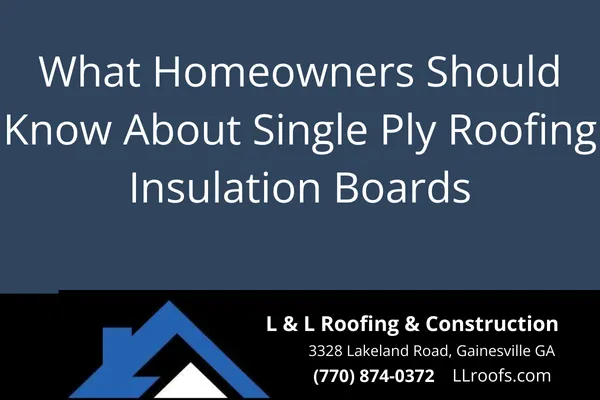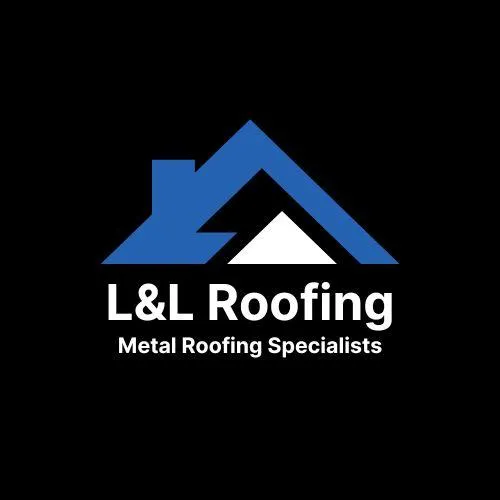
What Homeowners Should Know About Single Ply Roofing Insulation Boards
Single Ply Roofing Insulation Boards: A Homeowner’s Guide
Single ply roofing is a go-to option for flat and low-slope roofs here in Gainesville and nearby areas like Buford, Cumming, and Flowery Branch. But what most homeowners don’t see—yet plays a critical role—is what’s under the membrane: the insulation boards.
Let’s break down what you need to know about this essential part of your roofing system.
What Are Single Ply Roofing Insulation Boards?
Insulation boards are rigid panels installed underneath a single ply membrane—like TPO, PVC, or EPDM. These boards serve several important functions:
Add thermal resistance (R-value) to reduce energy bills
Create a flat, stable surface for membrane installation
Help with moisture resistance and drainage
Improve overall durability and lifespan of the roof
Common Types of Insulation Boards
Not all insulation is created equal. Here are the top materials used under single ply roofing in North Georgia:
🔹 Polyisocyanurate (Polyiso)
Most commonly used
High R-value (around 5.6 per inch)
Lightweight and easy to install
Compatible with various attachment methods (adhesive or fasteners)
Best for: Energy-conscious homeowners who want long-term savings on heating and cooling.
🔹 Extruded Polystyrene (XPS)
Slightly lower R-value than Polyiso
Superior moisture resistance
Rigid and strong under pressure
Best for: Roofs prone to ponding water or high humidity.
🔹 Expanded Polystyrene (EPS)
Budget-friendly
Lower R-value
More absorbent than XPS, but can be treated for moisture resistance
Best for: Projects where cost is a primary concern.
Installation Matters: Layering and Attachment
For proper performance, multiple layers are often used to avoid gaps and air leaks. Here’s what matters most:
Stagger seams between layers to prevent thermal bridging
Use a cover board to protect insulation from foot traffic or fasteners
Fasten or adhere boards based on manufacturer specs and local codes
At L&L Roofing, we always inspect the deck condition and slope before installing insulation to avoid standing water—especially crucial for single ply systems.
Energy Efficiency & Code Compliance in Georgia
In Georgia, insulation under single ply roofs often needs to meet minimum R-value requirements per the International Building Code. For example, commercial low-slope roofs typically require an R-value of R-20 or higher.
Adding proper insulation pays off by:
Lowering your heating and cooling costs
Reducing wear on your HVAC system
Helping your home meet Energy Star or green building goals
We’ve helped Gainesville homeowners and businesses see a real drop in utility bills by choosing the right insulation system.
FAQs
How thick should my insulation board be?
It depends on the required R-value. Polyiso is typically installed in 2-inch layers to meet or exceed code. Thicker needs? We’ll layer it correctly to keep costs and performance in balance.
Can I reuse insulation boards after a roof replacement?
Not usually. Water intrusion, compression, or damage can compromise their effectiveness. We always evaluate and recommend based on what’s safest and most durable.
Is insulation required under TPO or PVC?
Yes. Insulation isn’t just about energy—it’s also about support and moisture control. A single ply membrane without insulation is prone to movement, leaks, and fastener issues.
Honest Roofing Backed by Real Values
At L&L Roofing & Construction, we believe roofing should be done right—above the deck and below it.
When we install a single ply system, we pay close attention to your insulation because it affects your comfort, your energy bills, and your roof’s lifespan.
Whether you're roofing a Gainesville home or a commercial building in Dawsonville or Dahlonega, we’ll walk you through the right options with honesty and integrity.
Ready to talk insulation and single ply roofing? Give Luke and the team a call at (770) 874-0372. We’d be happy to walk your roof, answer your questions, and give you peace of mind.

